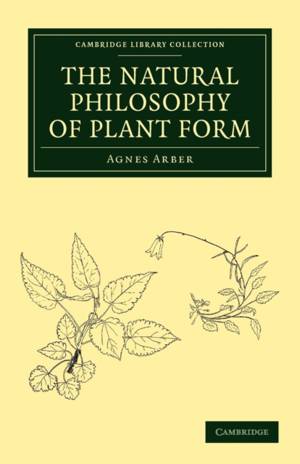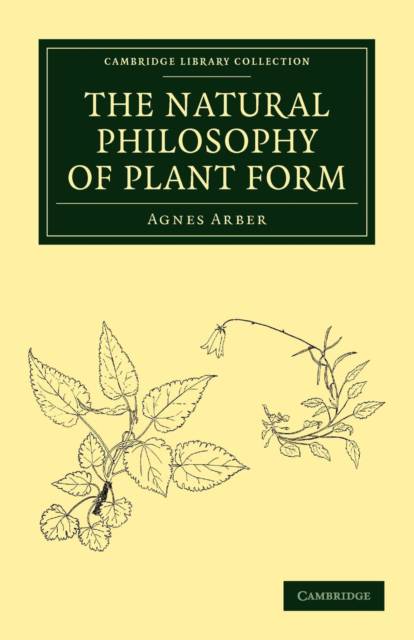
- Afhalen na 1 uur in een winkel met voorraad
- Gratis thuislevering in België vanaf € 30
- Ruim aanbod met 7 miljoen producten
- Afhalen na 1 uur in een winkel met voorraad
- Gratis thuislevering in België vanaf € 30
- Ruim aanbod met 7 miljoen producten
Zoeken
Omschrijving
When she was elected a Fellow of the Royal Society in 1946, Agnes Arber (1879-1960) was one of only three women to have been admitted into the institution. Arber conducted research that focused mainly on the morphology of flowering plants, but her work is characterised by its explorations of historical botany and evolution. First published in 1950, this book widens the scope of morphology into a study of all aspects of form across the whole chronology of botany. Arber begins with Aristotle and investigates the work of early modern botanists like Bacon and Goethe, before examining the effects of this wider approach on subjects like evolution and taxonomy. Arguing that post-Darwinian doctrine often causes botanists to twist their observations to suit a hypothetical history of phylogenesis, rather than changing the hypothesis to suit observational facts, this bold and fascinating text will interest students of biology and philosophy alike.
Specificaties
Betrokkenen
- Auteur(s):
- Uitgeverij:
Inhoud
- Aantal bladzijden:
- 266
- Taal:
- Engels
- Reeks:
Eigenschappen
- Productcode (EAN):
- 9781108045056
- Verschijningsdatum:
- 23/02/2012
- Uitvoering:
- Paperback
- Formaat:
- Trade paperback (VS)
- Afmetingen:
- 140 mm x 216 mm
- Gewicht:
- 340 g

Alleen bij Standaard Boekhandel
+ 96 punten op je klantenkaart van Standaard Boekhandel
Beoordelingen
We publiceren alleen reviews die voldoen aan de voorwaarden voor reviews. Bekijk onze voorwaarden voor reviews.








